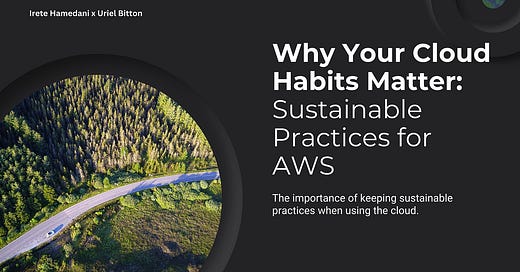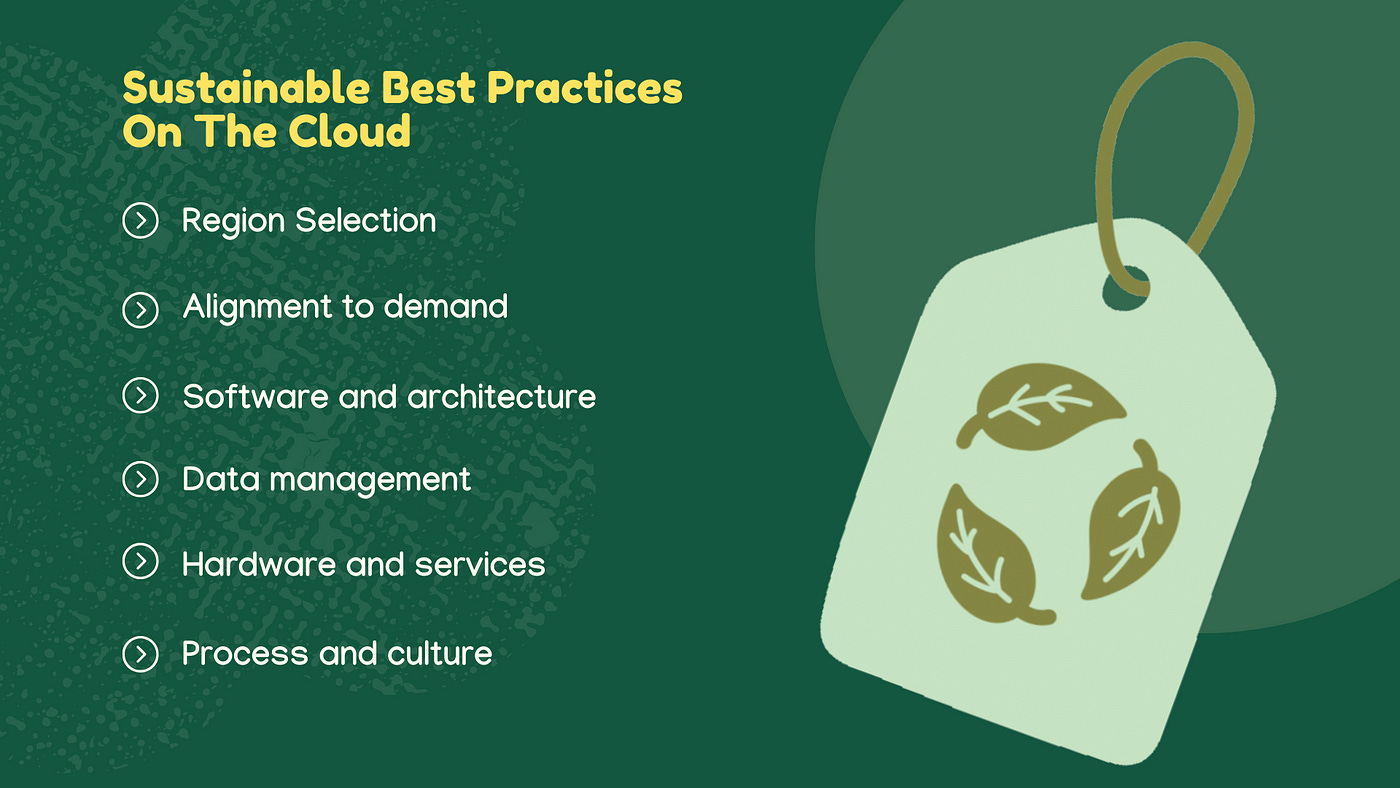Why Your Cloud Habits Matter: Sustainable Practices for AWS
The importance of keeping sustainable practices when using the cloud.
In the previous article on sustainable practices with AWS, we discussed the importance for businesses to use cloud resources to balance scalability and environmental responsibility.
We also talked about AWS’s sustainable initiatives, from its renewable energy goals to custom energy-efficient processors which empower companies to reduce their environmental impact and provide actionable tools to optimize their resource usage in the cloud.
If you missed that article, you can read it here.
In this article, we’ll explain why your cloud habits and usage matter and how to rewire these habits to be more conscious of sustainability when building with the cloud.
Being conscious of your cloud habits
Understanding how you’re using different services in different regions is key. AWS provides three main tools to monitor your usage.
Amazon CloudWatch is a robust monitoring system for resources and applications. You can use the Metrics functionality to monitor your usage though dashboards and alarms and also track past patterns. It requires some upfront configuration and may incur costs.
AWS Trusted Advisor provides ongoing recommendations based on best practices. As part of the service, it can identify unused resources.
AWS Cost Explorer allows you to track all of your costs and usage over time. It updates on a daily basis and is really useful for tracking usage even when some of the resources you’re using don’t have a cost. Out of the three, this is the most useful. You can set up different reports, and track different services, regions, and dimensions. You can look at historical data, and identify trends and areas to look into, and if you prefer using Excel, you can first download the details into a CSV file and analyze them there.
Although cost and sustainability don’t necessarily equate, the good news is, that reducing usage when possible, reduces both.
How you can change these habits
Now that you’ve taken a look at your usage patterns, it's time to put together a plan to reduce your usage, move usage between regions where that makes sense, and put in place the tracking mechanisms to keep on tracking and improving.
Here’s an example.
When looking through your services using the Cost Explorer, with the Usage Type dimension, you saw that there was a line item for S3 from a region you didn’t think you had any data in.
Turns out this was the deployment zips from a previous version of your app and that they were just sitting there. The size of the data was small enough for you not to notice the costs on AWS but data storage requires energy and resources at the data center and deleting those buckets was the easiest step in reducing your carbon footprint.
Hopefully, in the near future, AWS will provide better tools to pinpoint areas you can improve in, but until then, with a little consciousness and the right focus, you can make progress on your own.
Sustainability best practices
Each of the best practices below represents opportunities to reduce your sustainability impact on the cloud.
At the core, this drives results by maximizing utilization and minimizing waste [1].
Region Selection
Choosing the right region for your workload is super important.
It can impact how fast your applications run, your overall costs, how much time you spend, and even your environmental impact.
To get the best results, choose a region that fits both your business needs and your sustainability goals.
Alignment to demand
The way users interact with your systems can reveal ways to make them more eco-friendly.
Make sure your infrastructure grows and shrinks based on demand, using only what is needed to keep things running smoothly.
Match your services to what your customers actually need, place resources closer to users to reduce network usage, and clean up any resources that you’re not using.
Software and architecture
To use less resources, try to keep your systems running steadily and efficiently.
Sometimes parts of your setup go unused as user needs change. Combine these underused parts to make the most of them and get rid of any resources/services that are no longer needed.
You should also think about the devices your customers use to access your services, and design systems in a way that doesn’t make them upgrade their devices too often.
Data management
Manage your data intelligently by using less storage and fewer resources.
Know what data you have and pick storage options that best match its importance and how it’s used.
Move older or less critical data to archive-based storage and delete data you no longer need (If you don’t need them for compliance or analysis).
Hardware and services
Find ways to make your hardware more eco-friendly.
Use as little hardware as possible to get the job done and choose the most efficient options that fit your workload’s needs.
Process and culture
Find ways to lower your environmental impact by improving how you develop, test, and deploy your systems in the cloud.
Conclusion
More and more organizations are setting sustainability goals due to regulations, competition, and growing demand from customers.
Tech leaders are looking for ways to help meet these goals. By following design principles and best practices with AWS services, you can make smart choices that balance security, costs, performance, reliability, and sustainability for your cloud workloads.
Every step you take to use fewer resources and work more efficiently helps lower your environmental impact and supports your organization’s sustainability goals.
👋 My name is Uriel Bitton and I’m committed to helping you master Serverless, Cloud Computing, and AWS.
🚀 If you want to learn how to build serverless, scalable, and resilient applications, you can also follow me on Linkedin for valuable daily posts.
Thanks for reading and see you in the next one!







